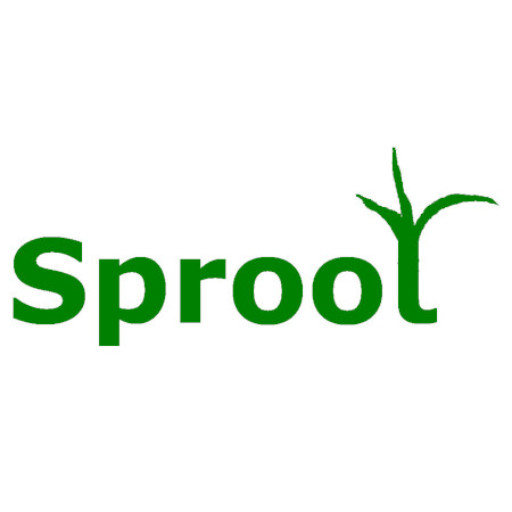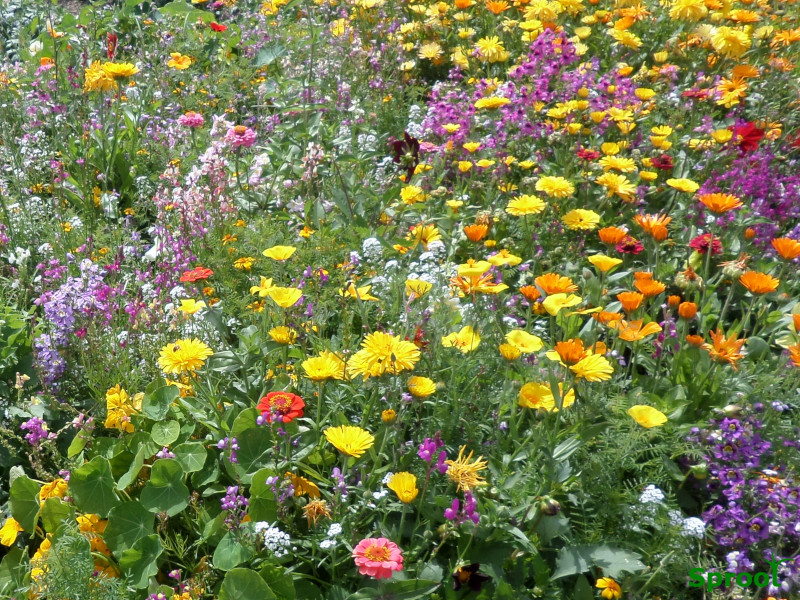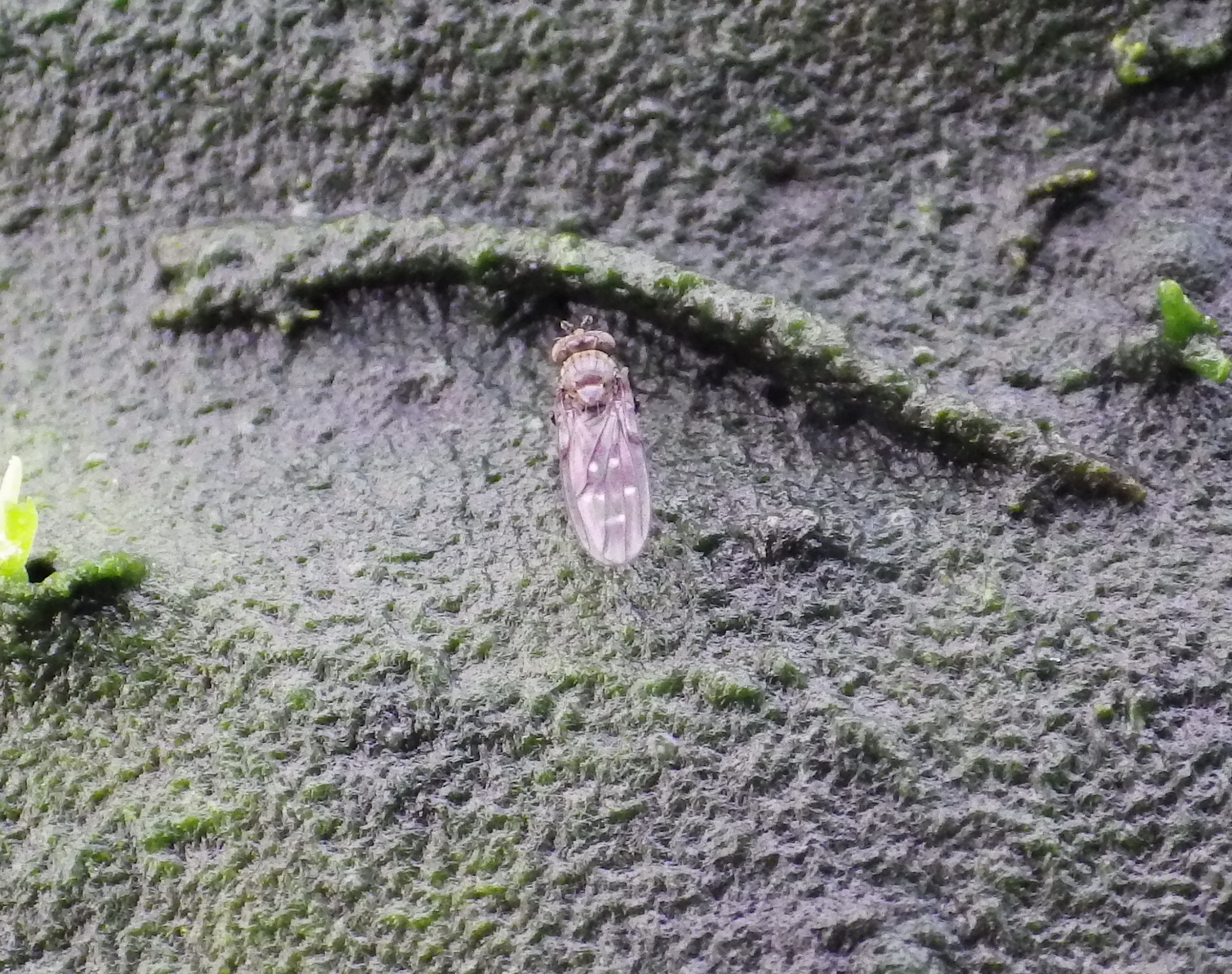Problems with peat free compost?
It might not be your fault.
The UK is making significant progress toward a peat-free future, and while this is a vital step for environmental sustainability, the transition hasn’t been without its challenges—particularly for amateur growers. Mixed results have become a common theme.
Some degree of teething trouble was always expected. After all, peat-free composts behave differently from their peat-based counterparts: they have different water retention properties, nutrient availability, and decomposition rates. However, in our experience, some retail composts currently on the market are simply not fit for purpose.
This isn’t just about plants failing to thrive—it’s also about how these composts need to be handled differently. They often require more careful watering, supplementary feeding, and closer monitoring. These are adjustments that not all home gardeners are aware of or prepared for.
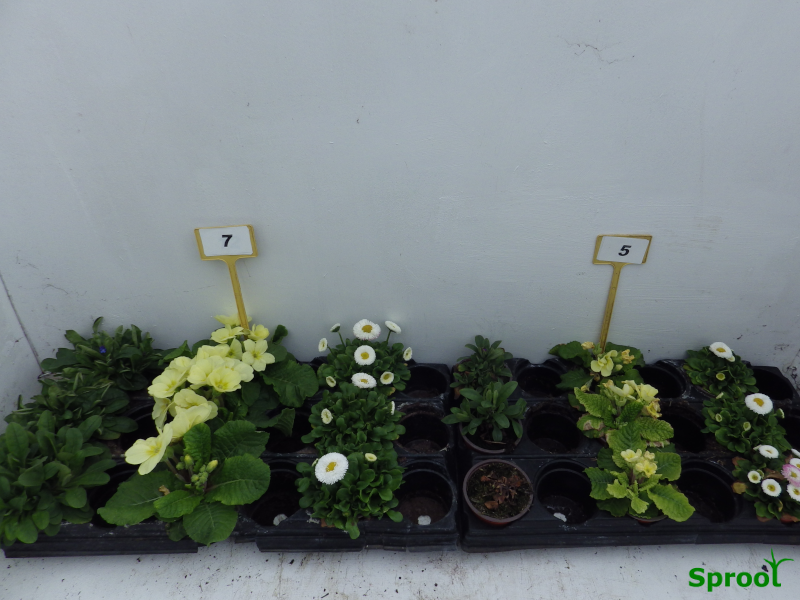
No 7 looks good however No 5 shows stunted plants and even some dead myosotis
We tested 15 peat free composts to see what would happen surely they can’t all be bad
We wanted to have a through test so we started by planting, violas, primroses, bellis and mysotis plug plants into 9cm pots. All the composts had identical plants and culture.
Potted late September, the plants were watered and kept frost free over the winter, we wanted to see how they coped with normal winter culture, and to test the feed levels we only used plain water.
This is what they looked like early February
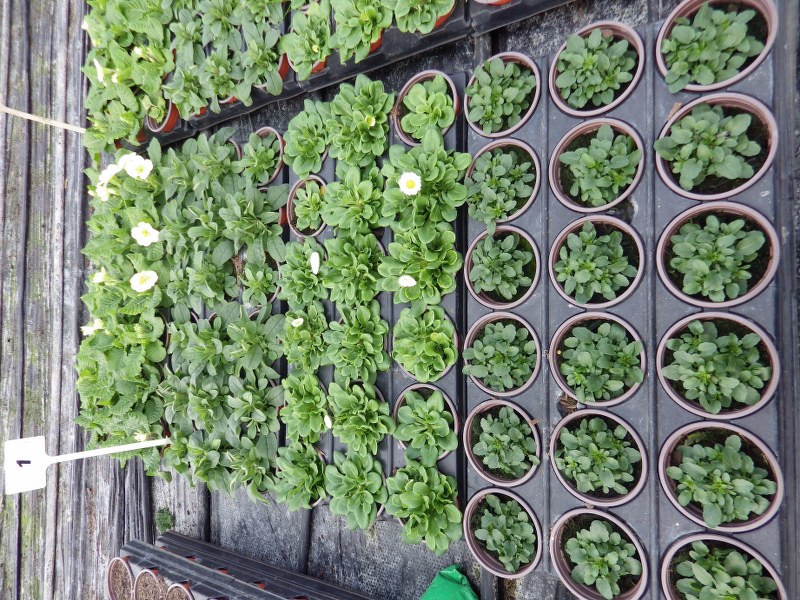
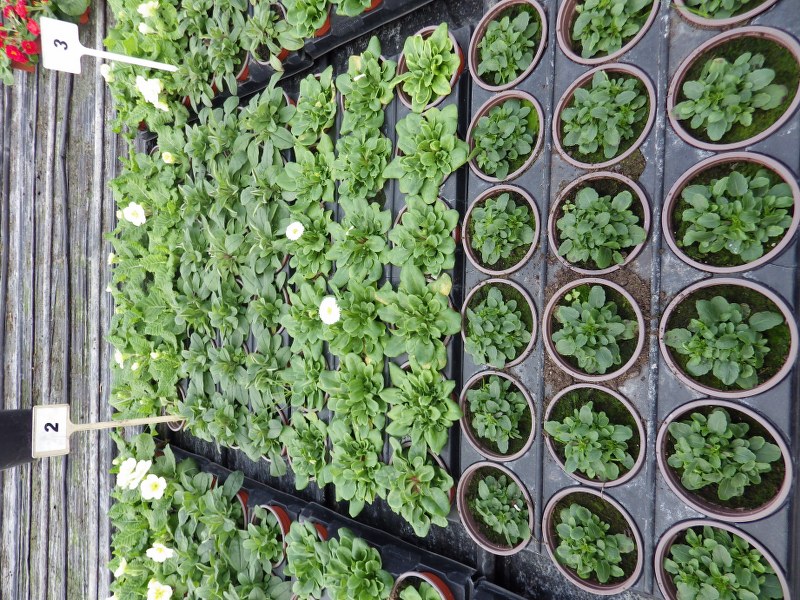
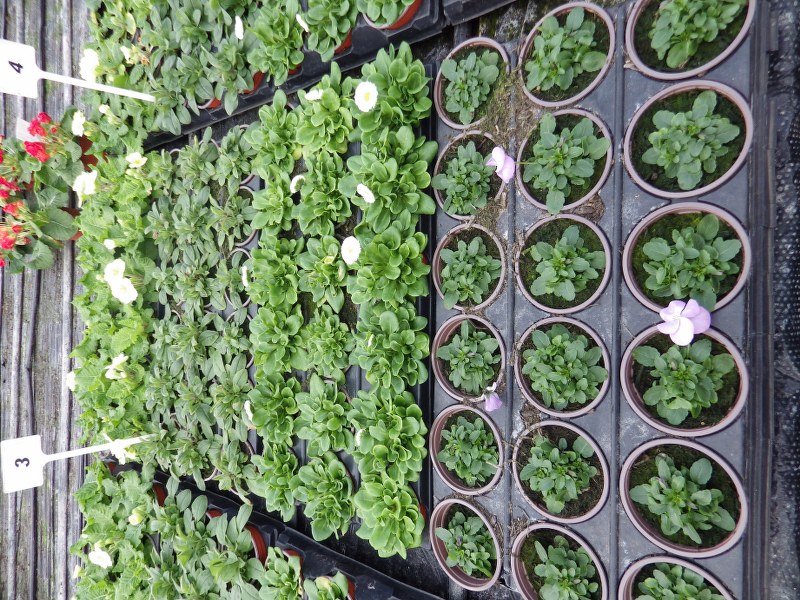
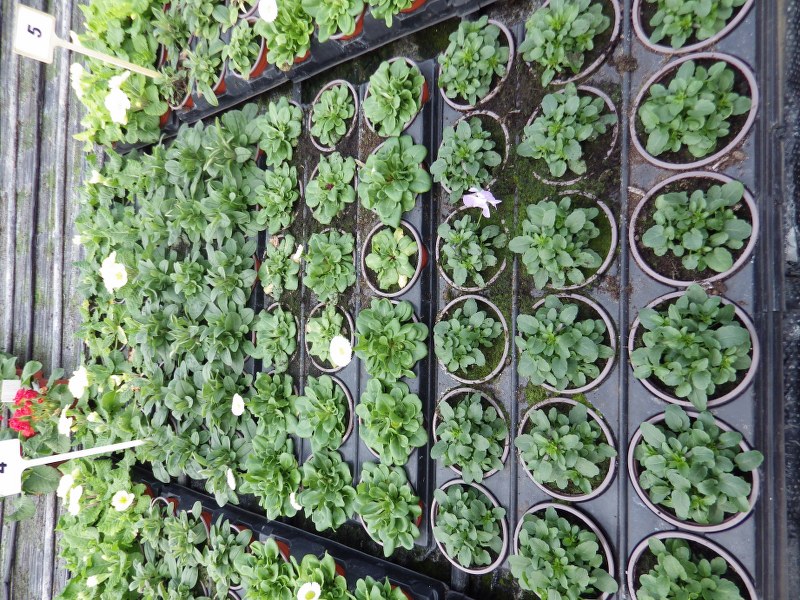
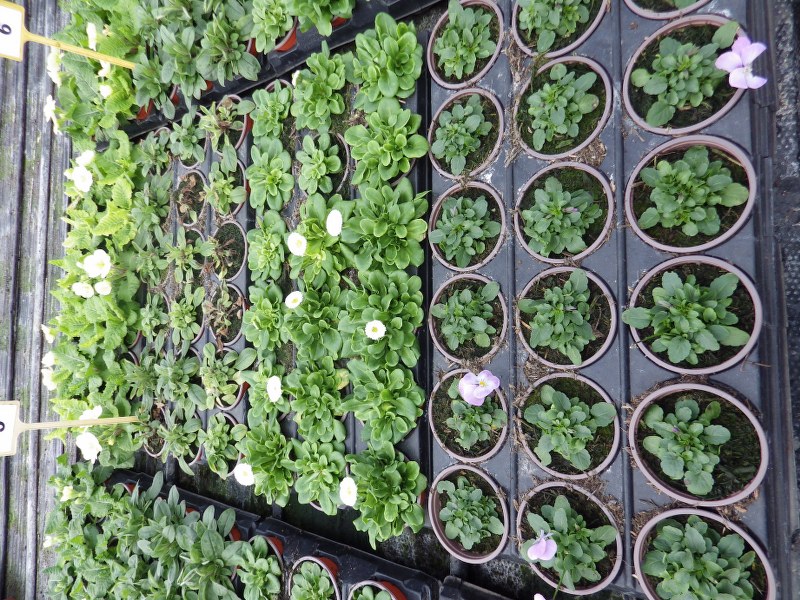
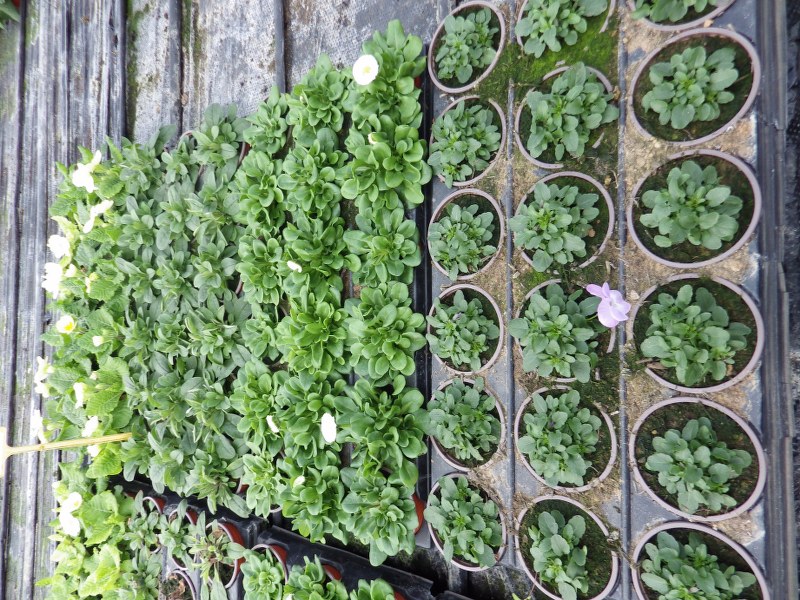
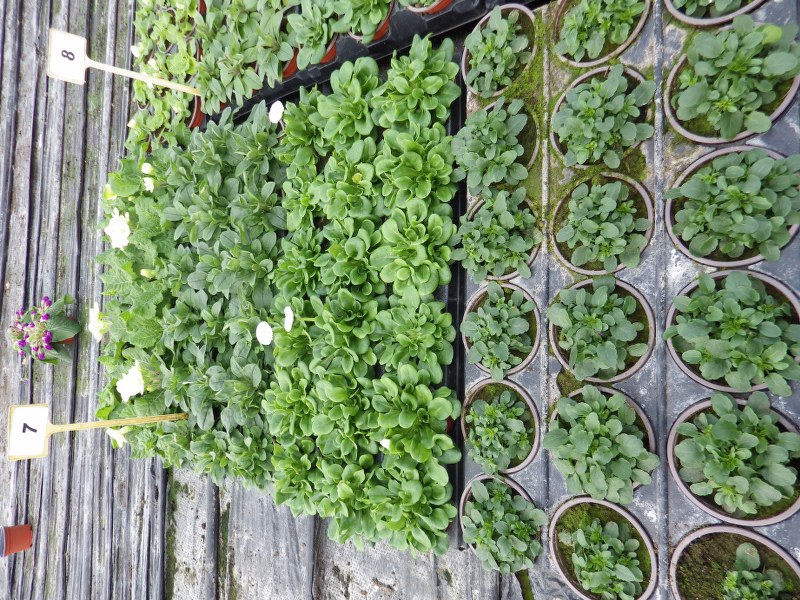
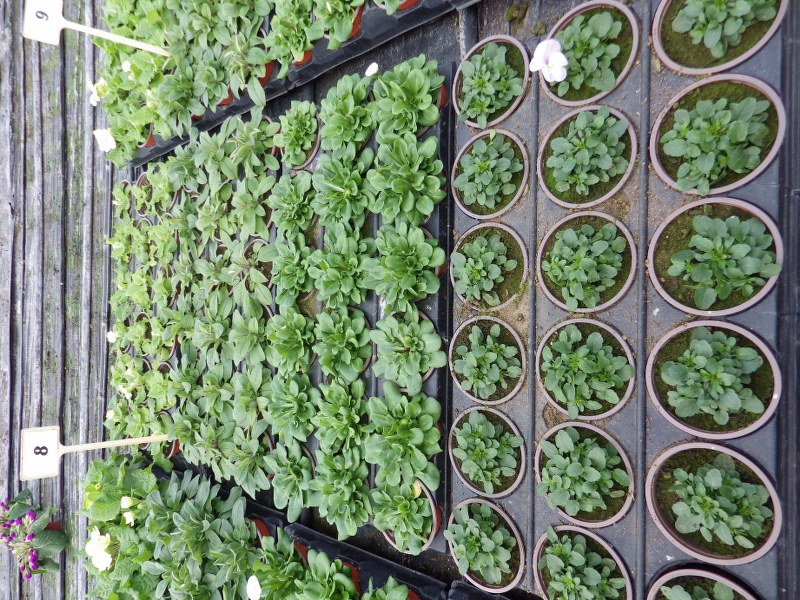
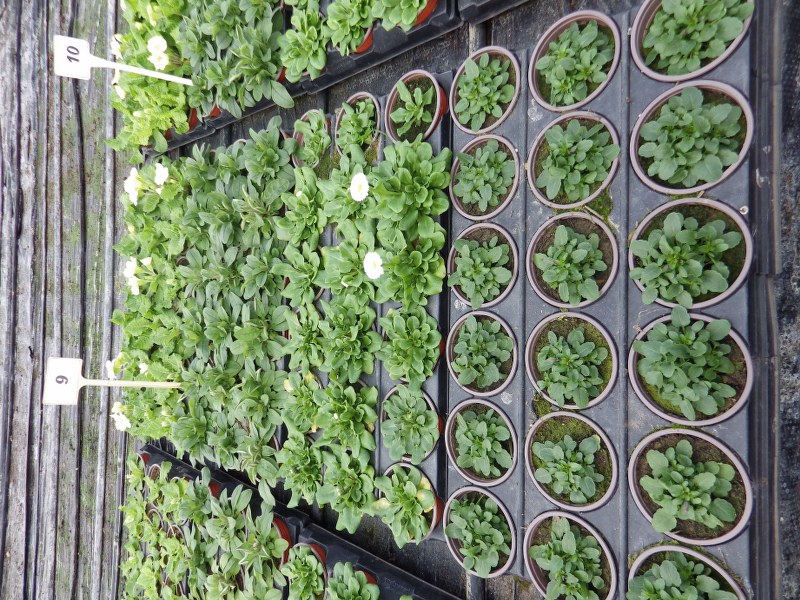
Numbers 11 to 15 look smaller but were potted 2 weeks later.
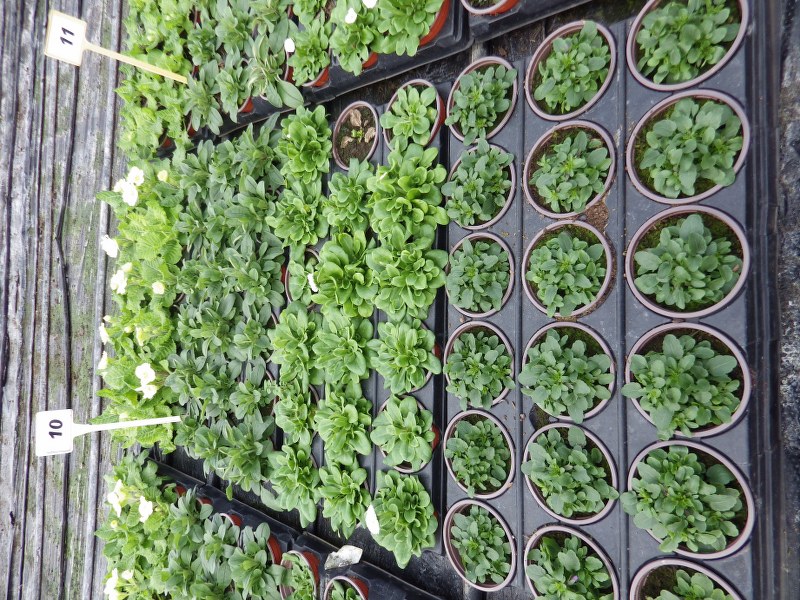
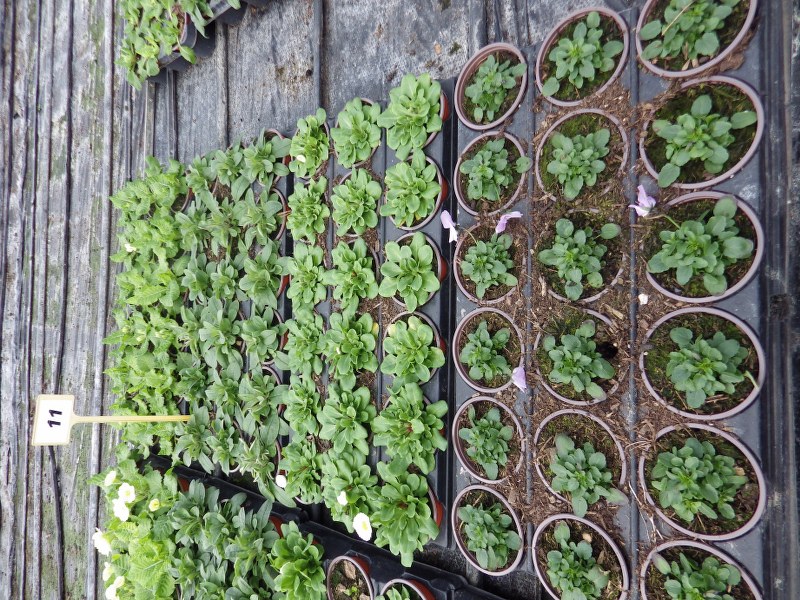
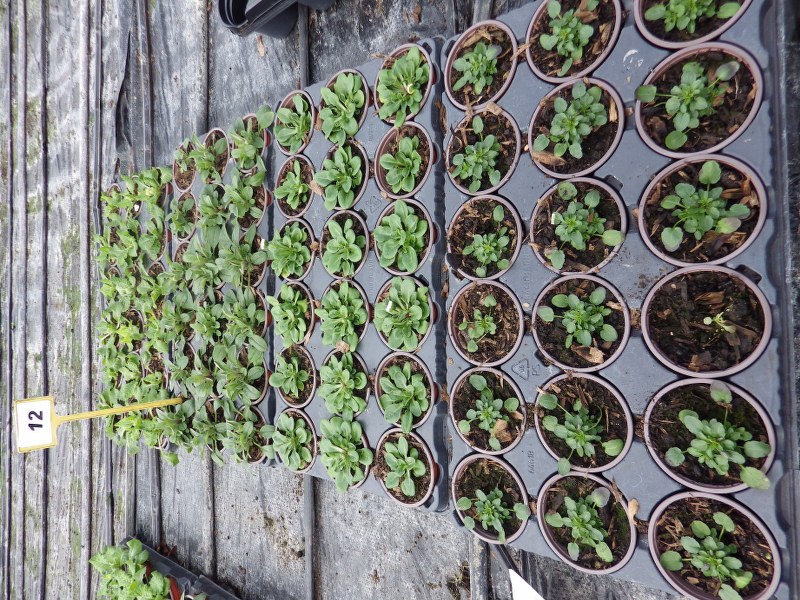
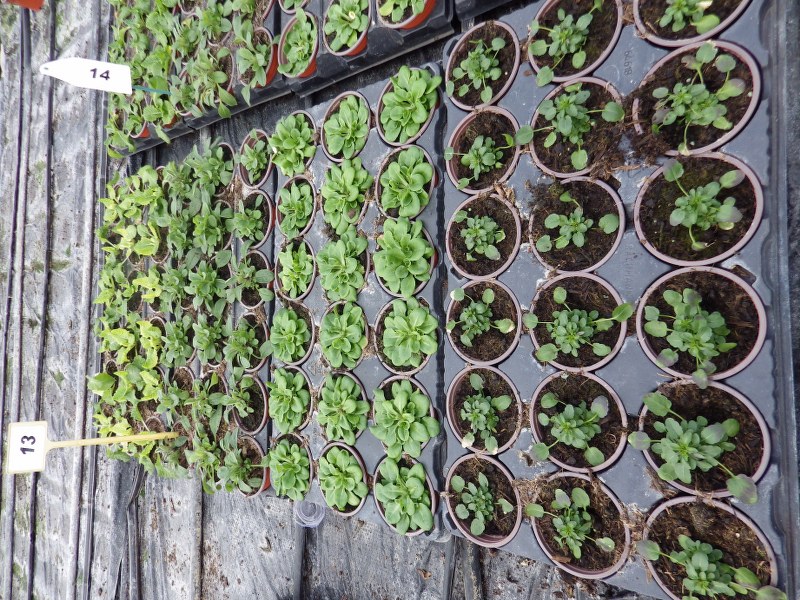
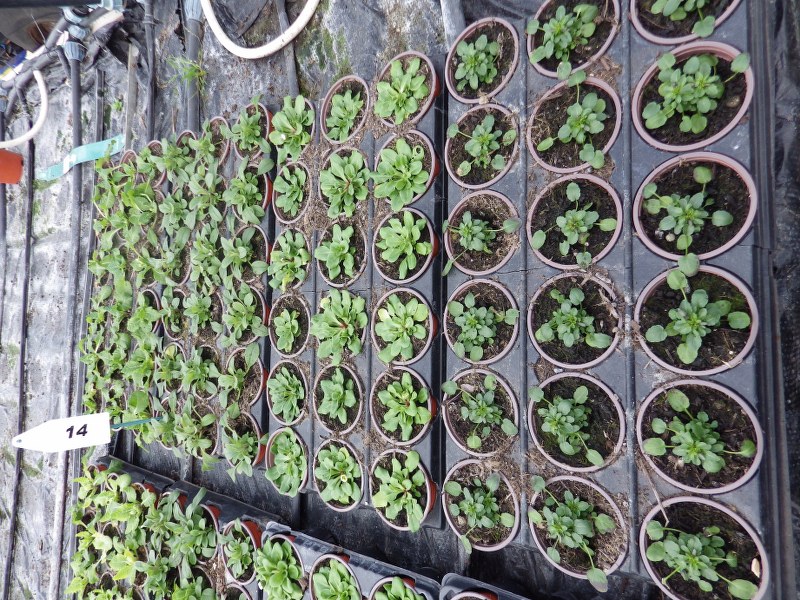
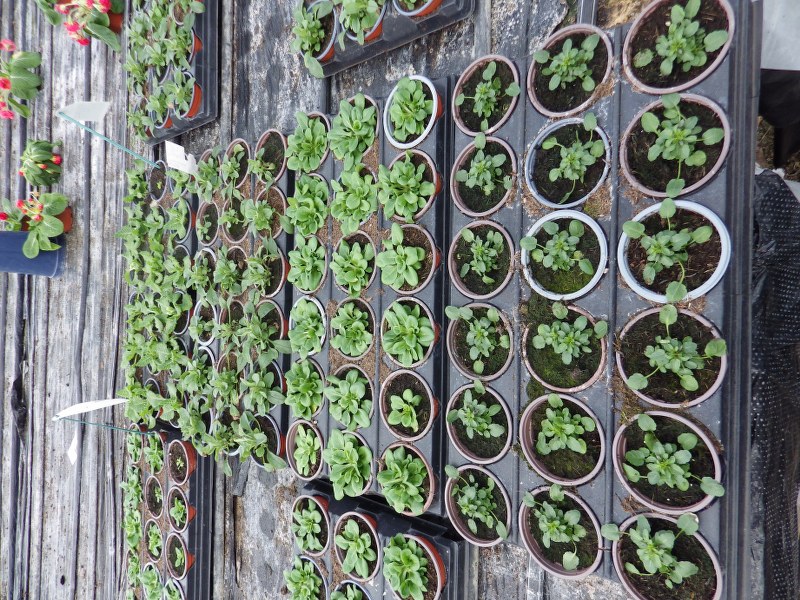
Primroses need to grow and develop in the autumn, so they were the first to show any problems
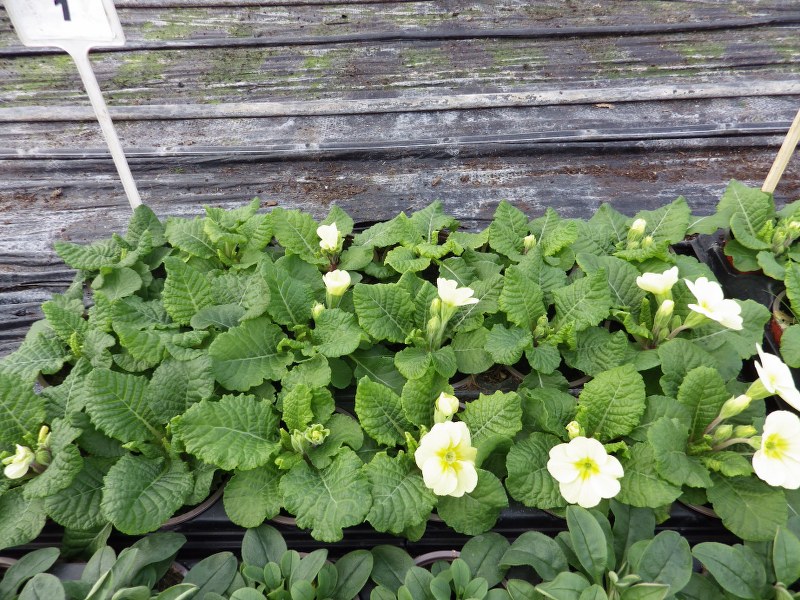
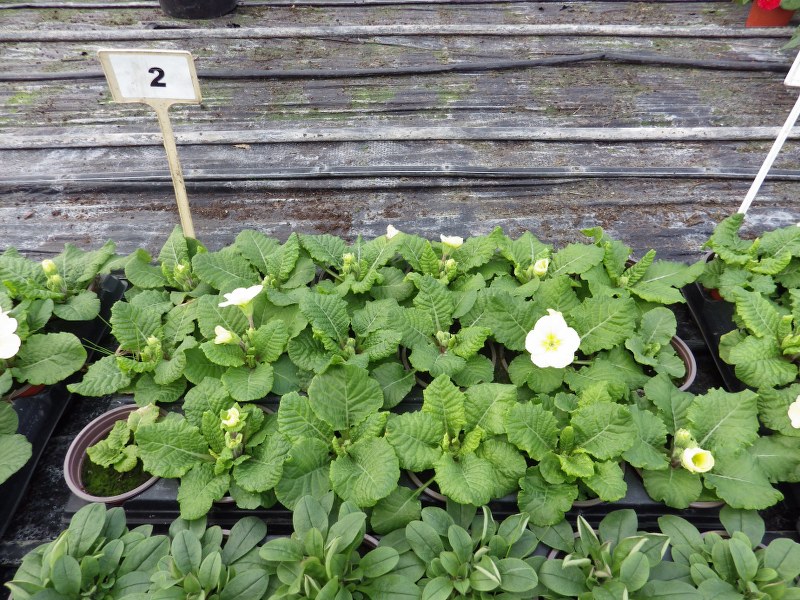
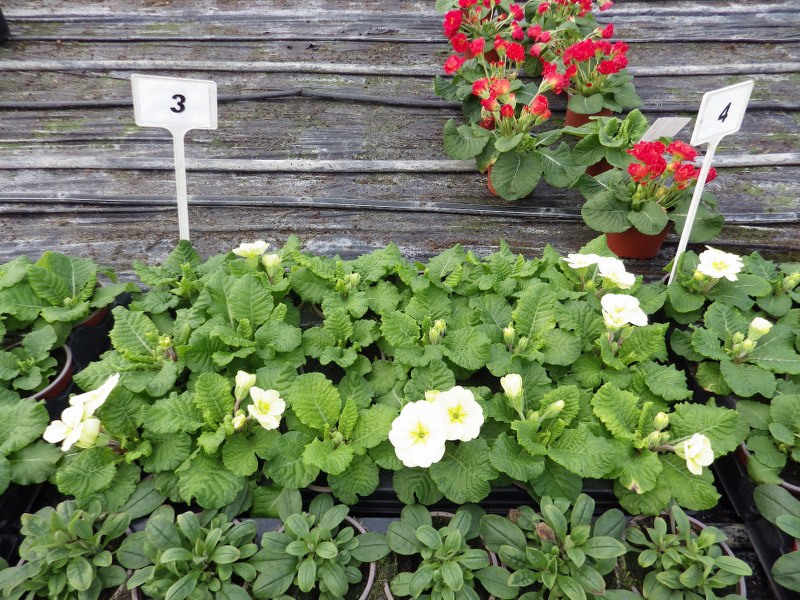
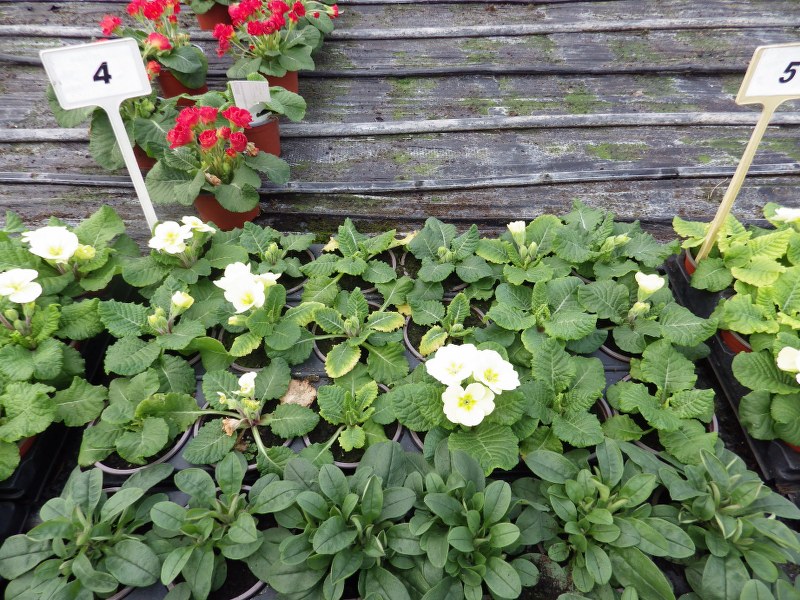
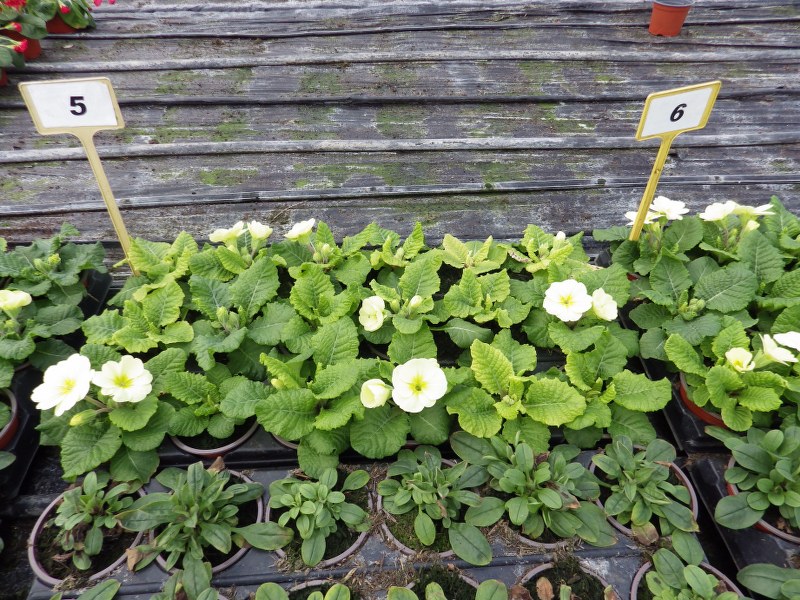
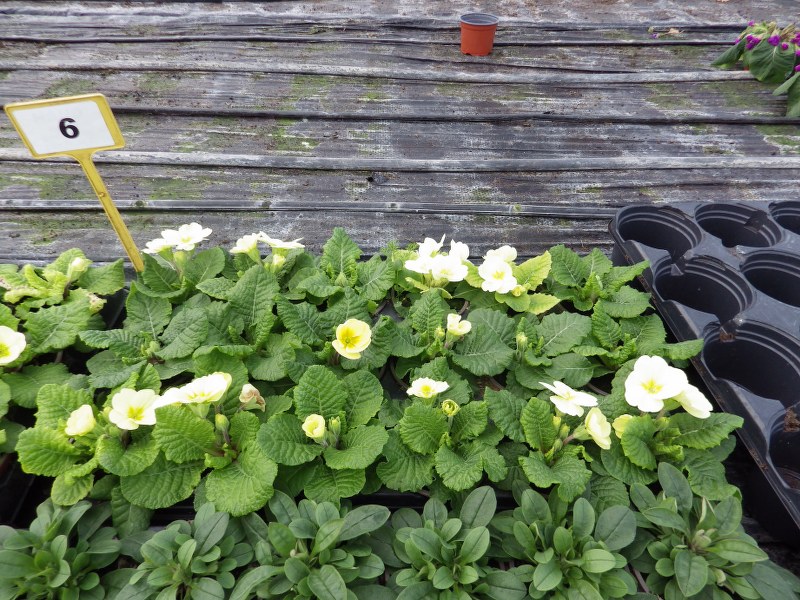
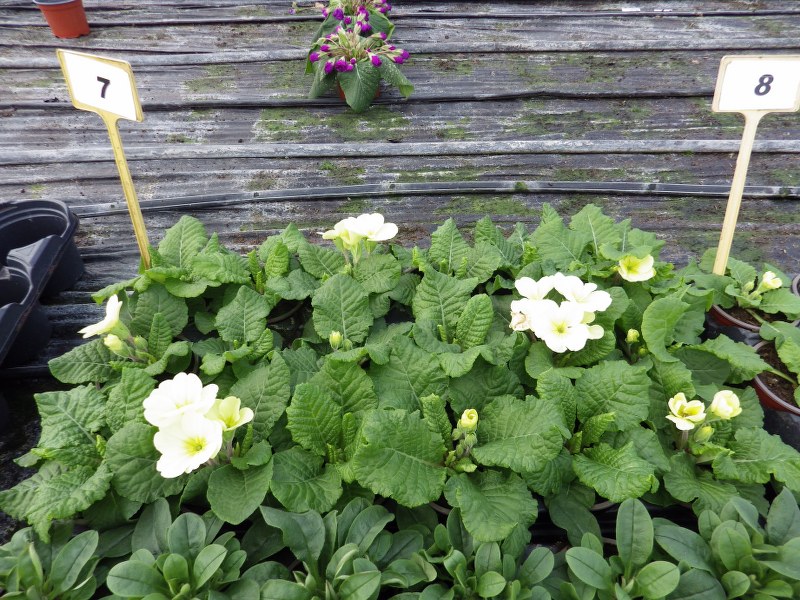
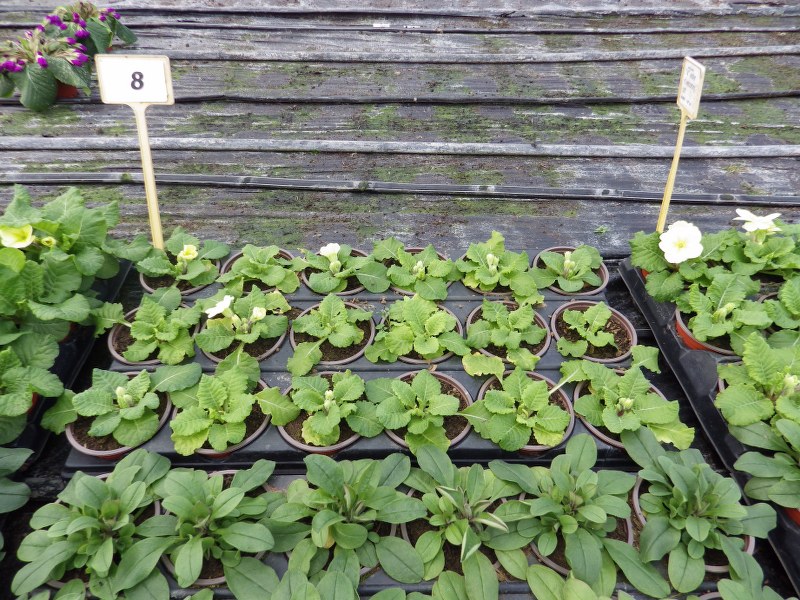
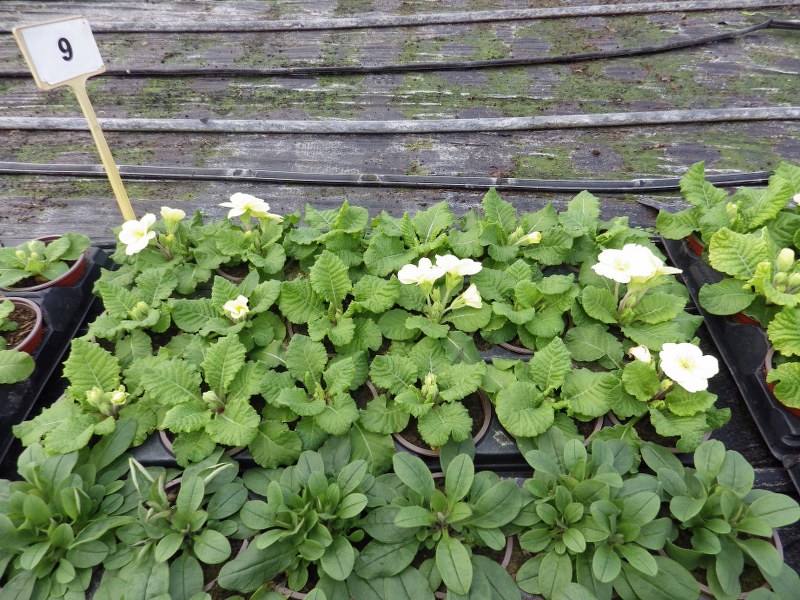
Numbers 11 to 15 look smaller but were potted 2 weeks later.
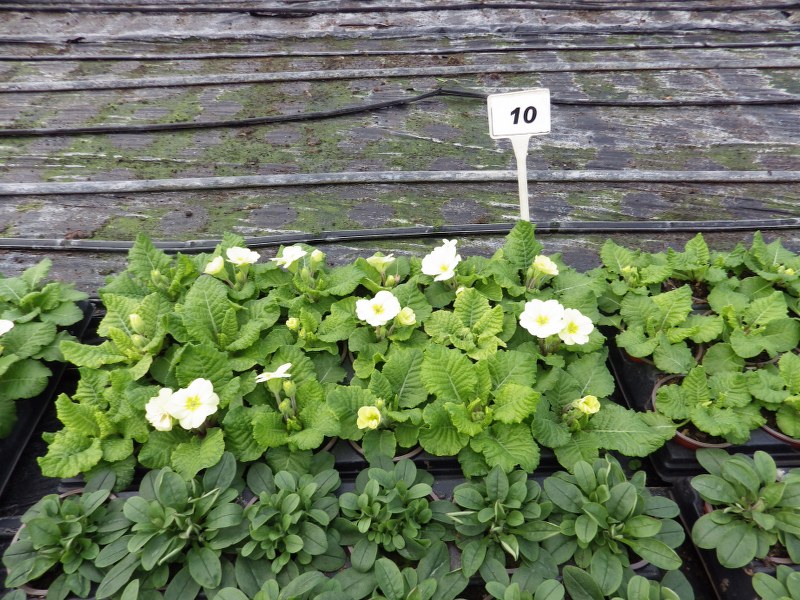
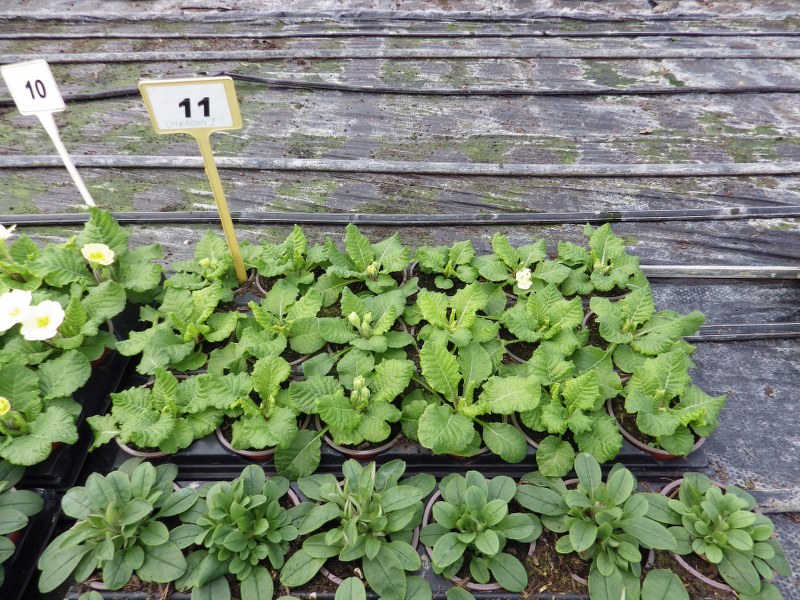
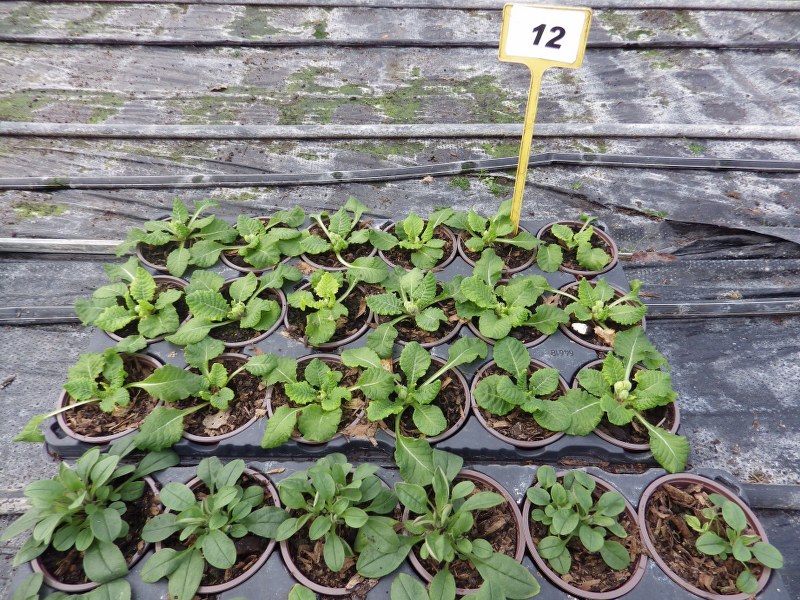
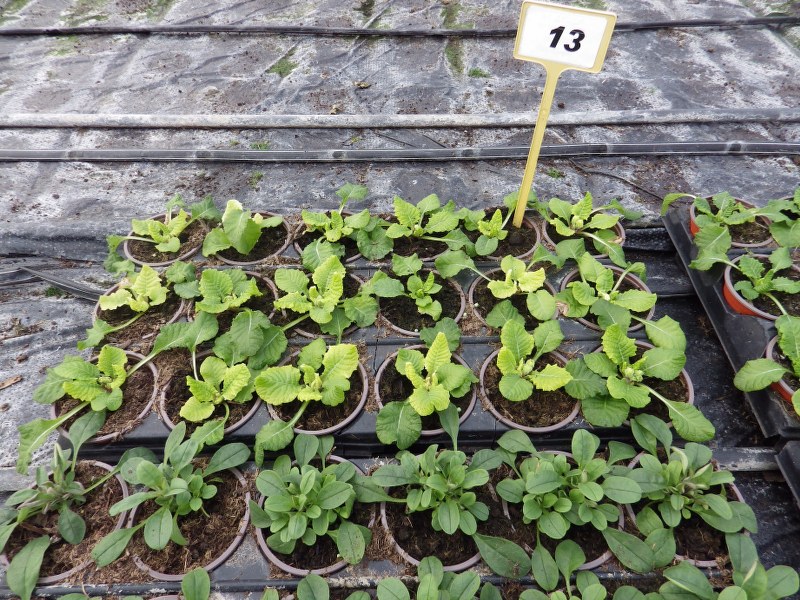
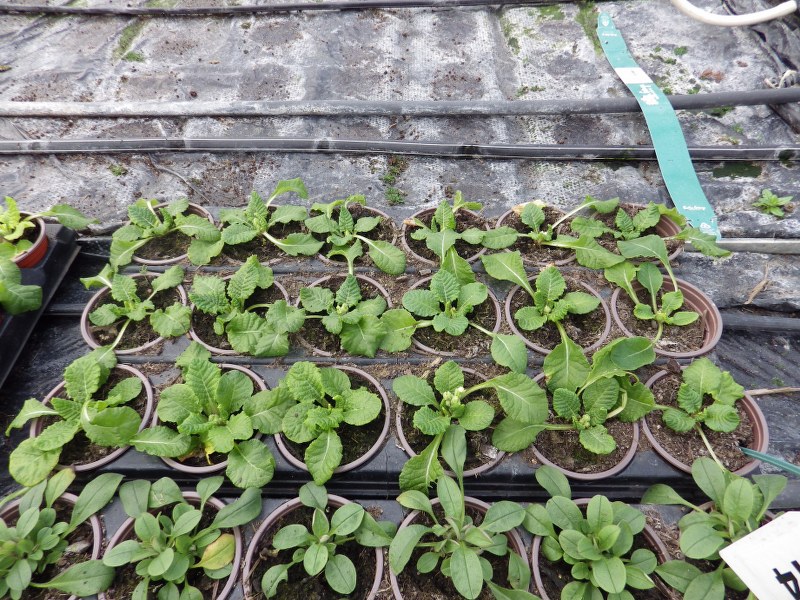
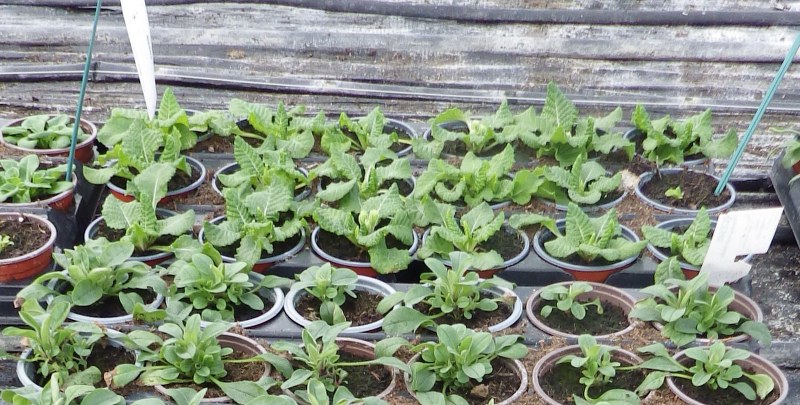
So we can see the primroses show a wide range of leaf colour and size, remember they are all the same variety
Composts
We used retail packs from the major suppliers and one (no 15) was a commercial grower peat free. As this is a small scale trial, we have chosen to hide the supplier names, we wanted to show a range of composts and types, but it is important to know what the bags are sold as, so you shouldn’t compare a seed compost to a multipurpose for instance
- 1 Multipurpose
- 2 Multipurpose
- 3 Multipurpose with J innes
- 4 Multipurpose
- 5 Multipurpose
- 6 J innes no 2
- 7 J innes no 3
- 8 J innes seed
- 9 J innes no 1
- 10 Multipurpose with J innes
- 11 Multipurpose
- 12 Multipurpose
- 13 Tub & Basket
- 14 Multipurpose
- 15 Grower peat free
Comparing composts
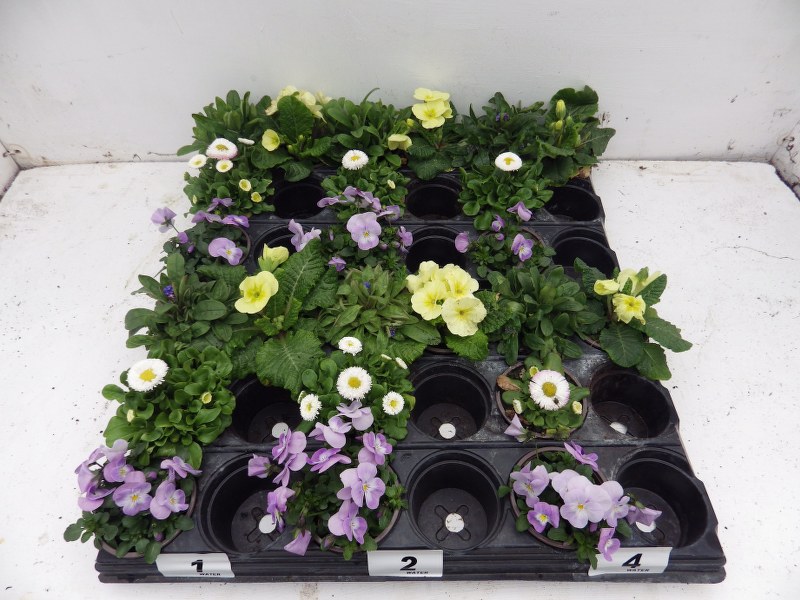
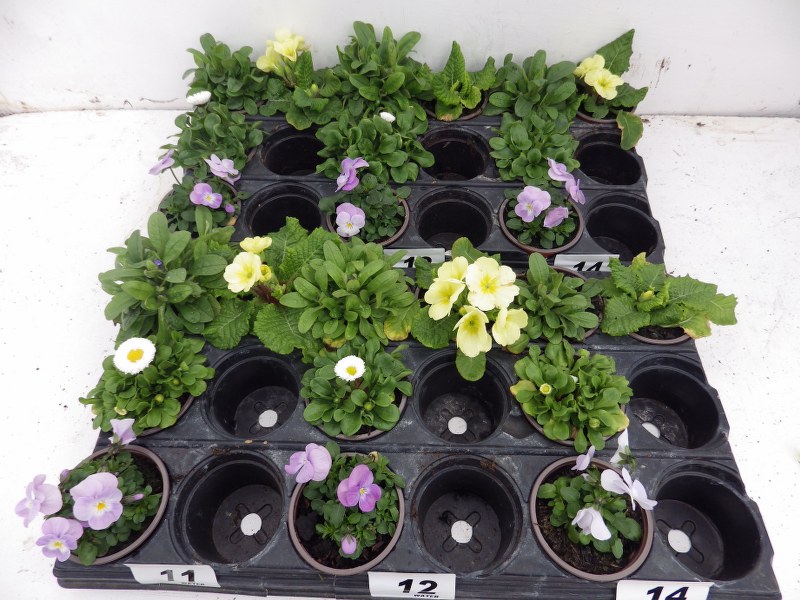
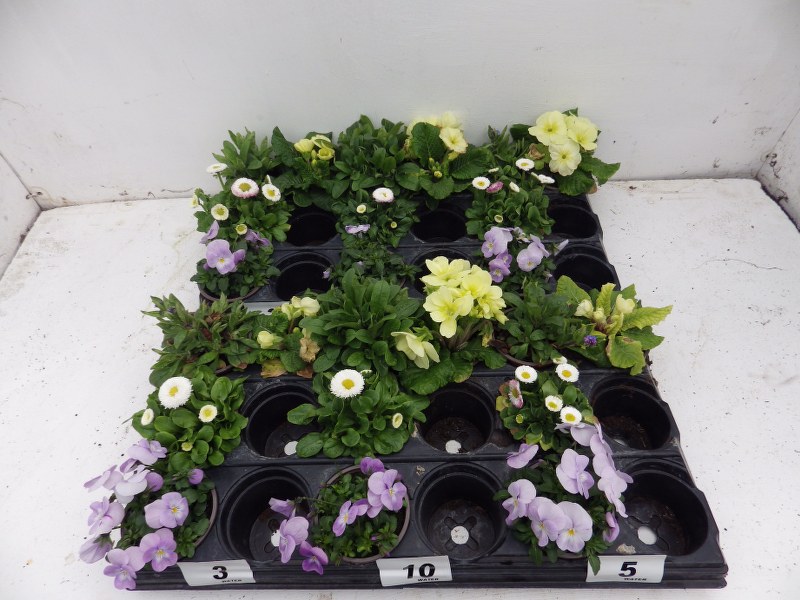
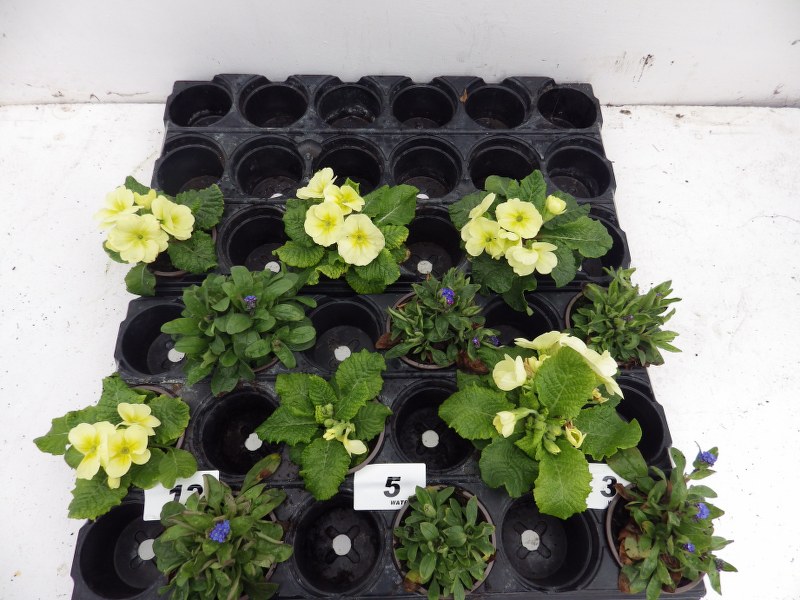
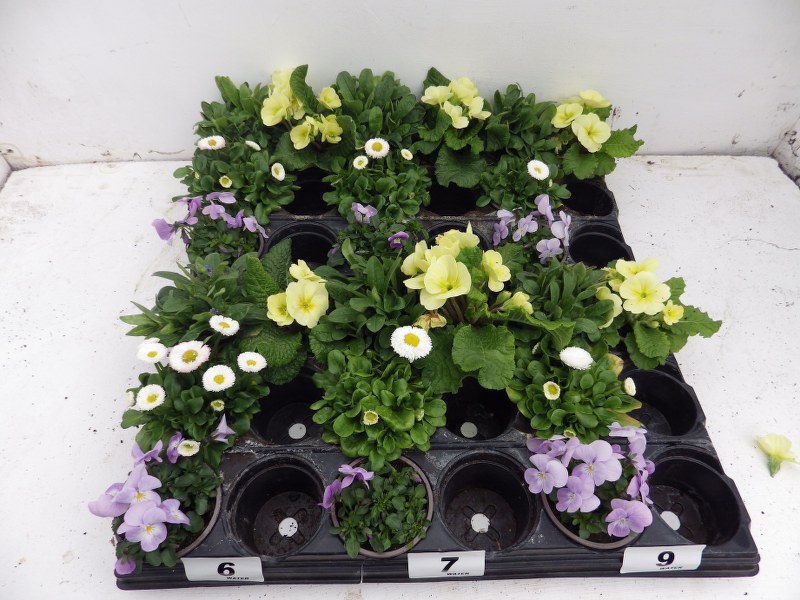
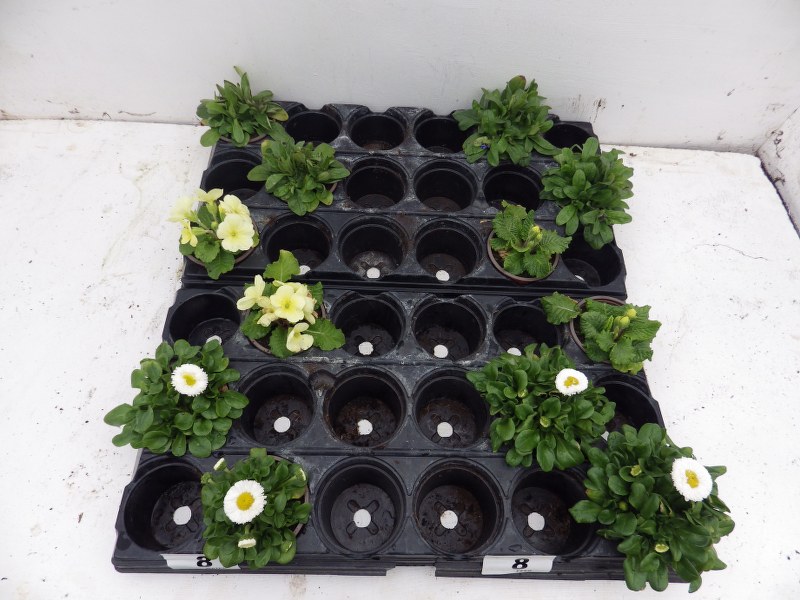
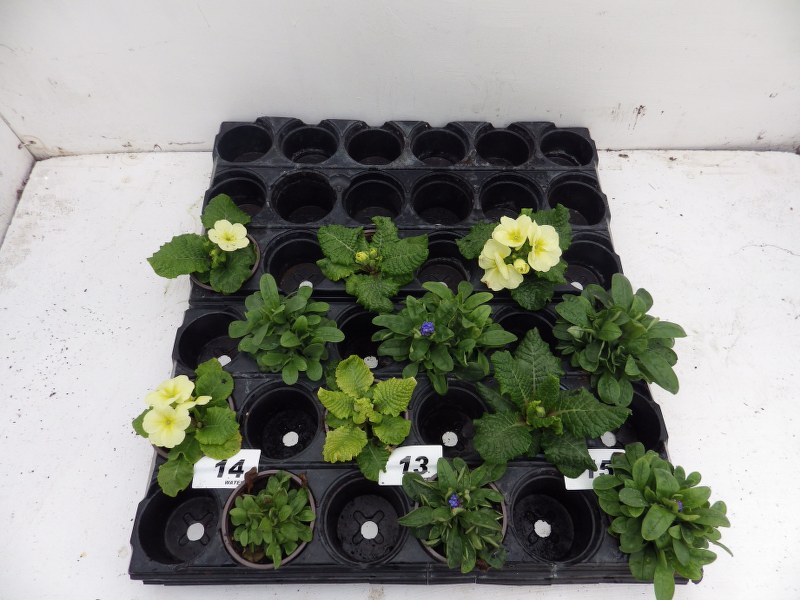
Feeding your plants will help
Previous testing has shown that poor composts can be brought round with some liquid feeding so we decided to give half the plants extra feed from February onwards, we had to start with some regular foliar feeds to boost the leaf colour and then follow up with regular normal strength feeds.
The white labels on the left have only had water, the yellow on the right have had regular liquid feeding from mid February. You can see most composts have been improved by feeding especially the ones with low levels of food. You can see this effect with composts 3, 4, 5, 8,11 & 12.
Composts with plenty of food only grew slightly bigger, but the extra food didn’t harm the plants.
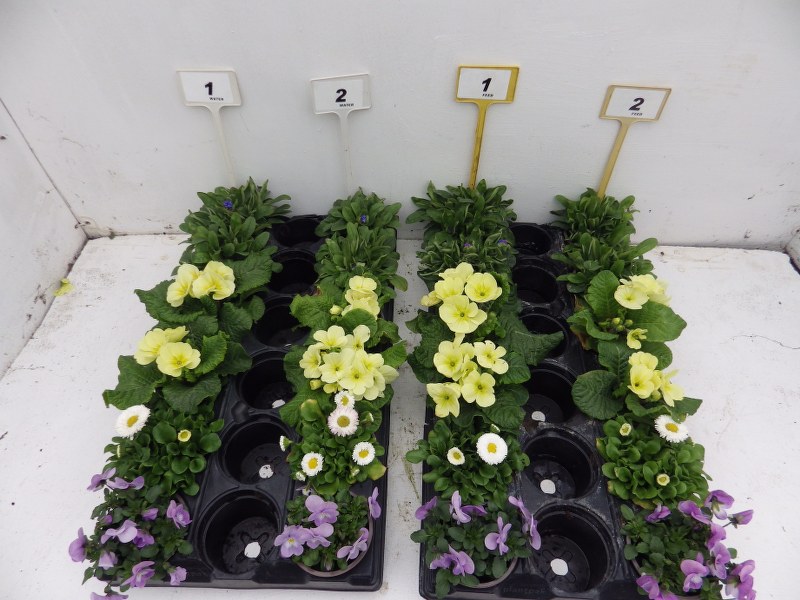
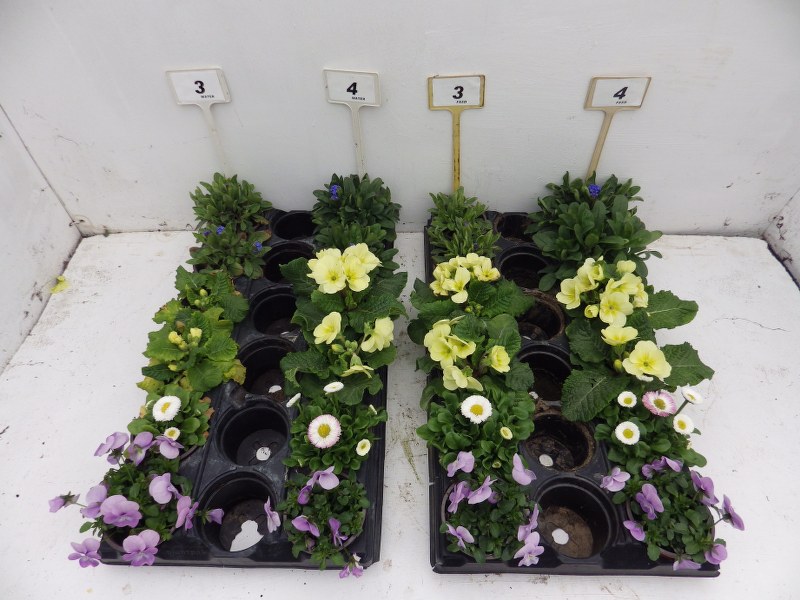
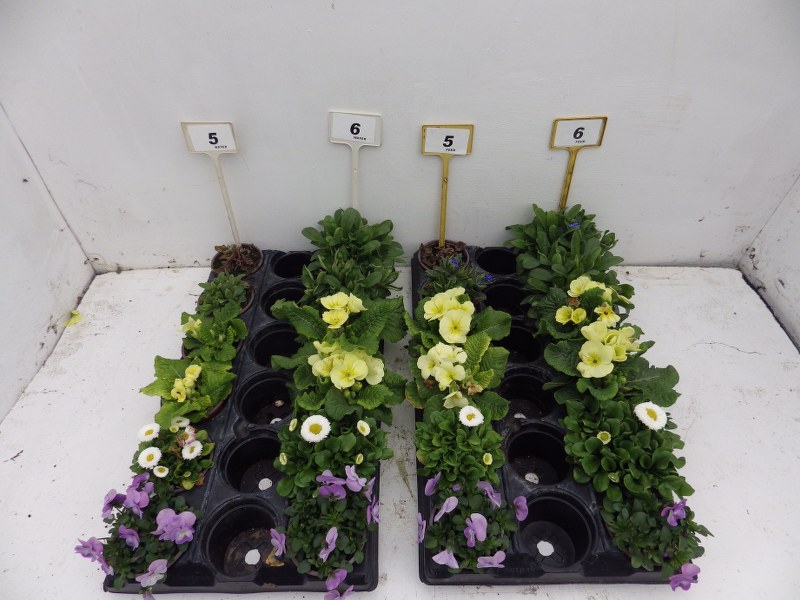
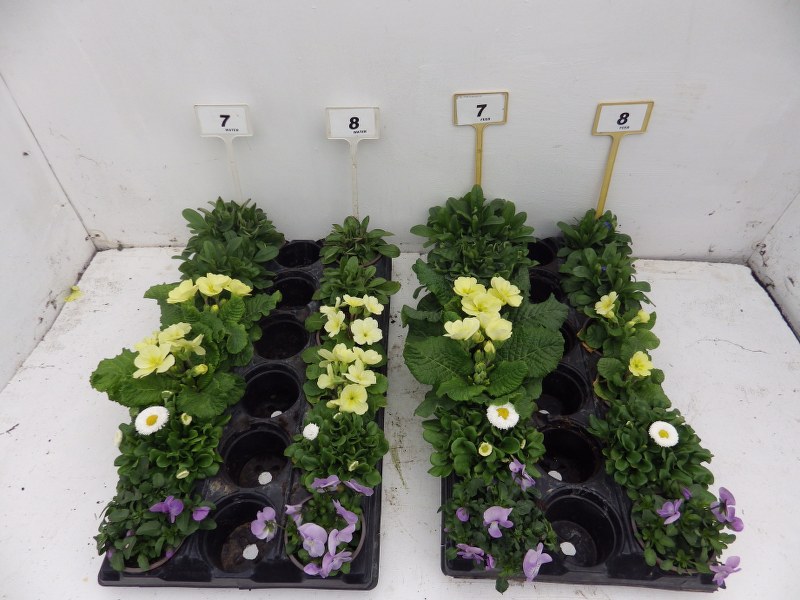
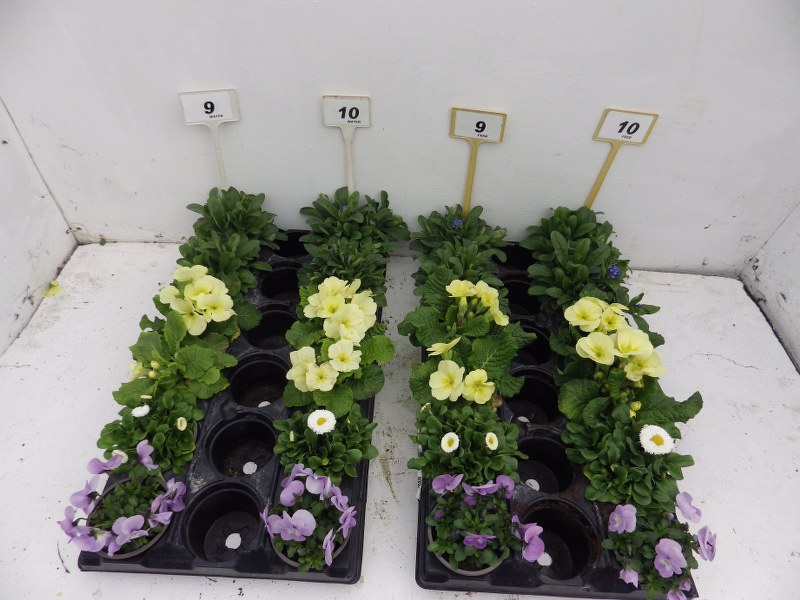
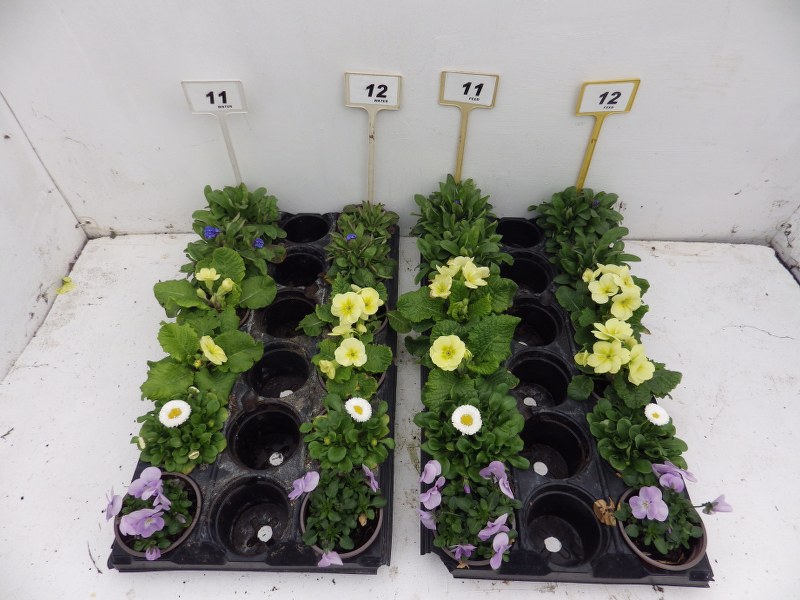
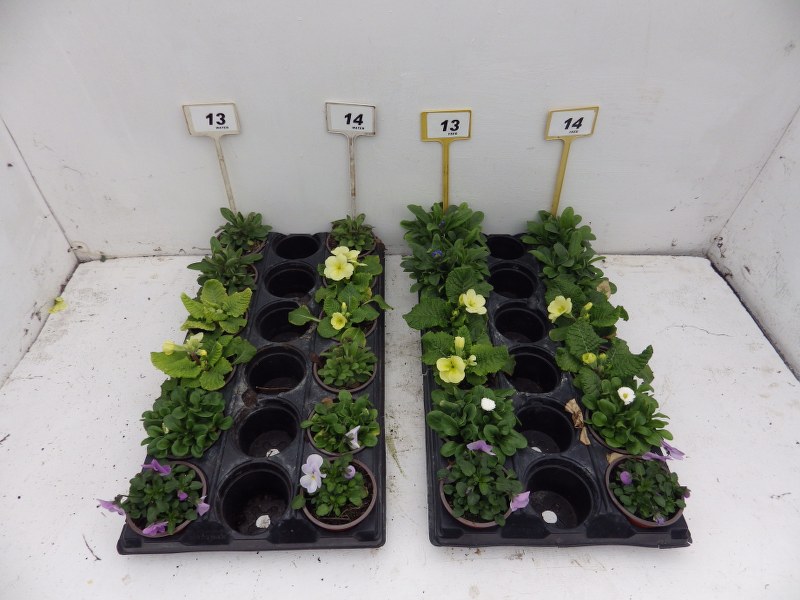
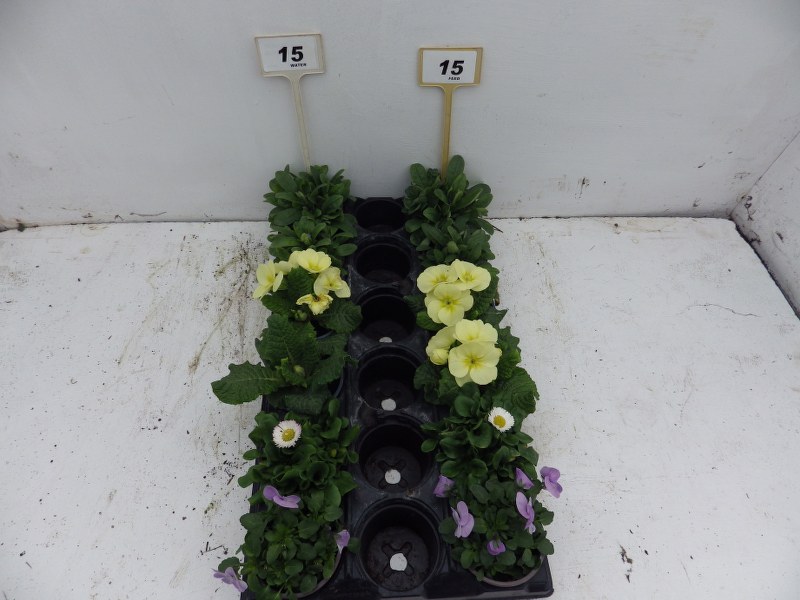

Common Issues with Peat-Free Compost:
One of the main challenges with peat-free compost is the lack of transparency and consistent information. Manufacturers are not required to disclose the specific ingredients in their products, making it difficult for consumers to understand what they’re actually using. This also extends to nutrient content—there is often no clear indication of how much feed or fertilizer is included, which can lead to confusion.
Additionally, the science of blending alternative materials (like coir, wood fibre, green waste, or composted bark) is still evolving. These components behave very differently from peat, and the best ratios or combinations aren’t fully understood yet. As a result, performance can vary significantly between products and even between batches of the same brand.
Peat-free compost is also typically more biologically active and less stable than peat-based compost. This means it can break down more quickly, change structure over time, or even cause nutrient imbalances as it decomposes—especially if not stored properly.
So what could go wrong
- Nutrient and pH Variability – Peat-free composts vary in composition, meaning their nutrient levels and pH can be inconsistent. Some may require additional fertilisation.
- Water Retention Differences – Peat-free compost can dry out quickly or, conversely, retain too much moisture. Adding perlite or grit can help adjust water retention.
- Breaks Down Faster – Peat-free composts decompose more rapidly than peat-based alternatives, meaning soil structure may degrade over time, requiring frequent topping up.
- Potential Contamination from Green Waste – Some composts made from municipal green waste may contain contaminants like plastic, weed seeds, or pathogens. Always buy from reputable brands however we are aware some use green waste from sources with lower standards.
- Attracts Pests Like Fungus Gnats – The organic matter in peat-free compost can attract pests, so storing compost in sealed containers and improving drainage can help prevent infestations.
- Lower shelf life, there is a lot of variation between bags, the longer you store the compost the more the compost changes. Compost stored outside in the sun and wet bags of compost are worse.
Final Tips for Buying Compost
- Read the Label Carefully – Ensure the compost matches your intended use, is it a potting compost?
- Fluff Up the Compost Before Use – Bagged compost is often compressed for storage, restore the missing air by remixing the compost.
- Consider Additives – Adjust the mix based on your plants’ specific needs. You don’t know what is in the bag so think about liquid feeding if plants look pale.
- Store Compost Properly – Keep in a cool, dry place to prevent nutrient loss and pest infestations.
- Price, we didn’t find more expensive compost to be any better than cheaper bags
- Multipurpose compost, there is no such thing, it is a compromise so look at improving it with perlite, soil, or additives.
- Brands, find one you like and stick with it. The range and quality of composts is huge and always changing. It is better if you stick to one brand and learn how to use it. Own brand compost is made in the same factories and is okay to use.
- Added john Innes, clay, humic material, seaweed or worm cast will always improve the compost and is worth choosing
